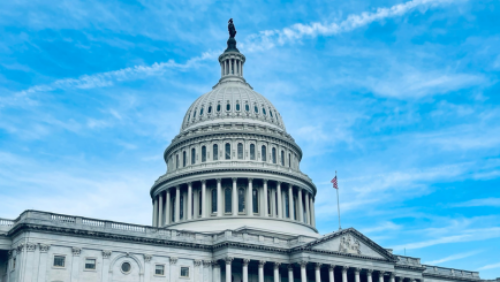Immigrant workers have long played critical roles in the U.S. labor force in a wide range of industries and occupations. Yet hiring an immigrant worker on a permanent basis as a Lawful Permanent Resident (LPR)—rather than a temporary worker—is a complex and time-consuming process. This fact sheet defines the various components of the permanent, employment-based immigration system—and then describes how those components relate to each other in the application processes for each of the five preference categories.
There are five employment-based “preference categories” for working permanently in the United States, and the distinctions between these categories are sometimes subtle. Each of these categories is subject to two sets of overlapping numerical caps that leave the nationals of some countries in limbo as they wait for years to become LPRs. In some cases, a worker may “self-petition” rather than be sponsored by a prospective employer. And in two of the preference categories, if a worker is being sponsored by an employer, the Department of Labor (DOL) must issue a “labor certification” stating that hiring a foreign worker will not disadvantage any similarly employed U.S. workers.
Key Elements of the Permanent, Employment-Based Immigration System
Employer Sponsorship vs. Self-Petition
Most employment-based immigrants are sponsored by a prospective employer. However, certain categories and sub-categories of workers can self-petition without the involvement of an employer.
Numerical Caps
Each preference category is capped at a percentage of the 140,000 employment-based visas available each year. Each year, nearly half of these visas go to spouses and minor children of the worker receiving the visa. In addition, no one country can receive more than 7 percent of the visas allotted in each category.
Labor Certification
In the case of workers sponsored by an employer, there are two preference categories that require “labor certification” by DOL. For these categories, DOL must determine that there aren’t enough qualified U.S. workers available to fill the job for which a foreign worker is being sought, and that hiring the foreign worker will not adversely impact the wages or working conditions of comparable U.S. workers.
Preference Categories
Workers wanting to immigrate permanently to the United States must fit into one of five possible “preference” categories.
First Preference: Also known as “priority workers,” this category includes three sub-categories:
- Persons of “extraordinary ability” in the sciences, arts, education, business, or athletics.
- “Outstanding” professors and researchers.
- “Certain” multinational executives or managers.
This preference category is capped at 28.6 percent of the employment-based visas available each year, which comes to 40,040 visas. To that are added any visas unused during the same fiscal year from the fourth and fifth preference categories. Labor certification is not required
Second Preference: This category includes members of the professions holding “advanced degrees,” or persons with “exceptional ability” in the arts, sciences, or business. This category is also capped at 28.6 percent of all employment-based visas, or 40,040. Generally, this preference category requires labor certification. However, it is possible for a worker to obtain a “national interest waiver” and forgo the labor certification process if he or she possesses “exceptional ability” and therefore “would greatly benefit the nation” through their employment.
Third Preference: This category includes the following three sub-categories:
- “Skilled workers” are persons whose position requires “a minimum of two years’ training or work experience.”
- “Professionals” fill positions “requiring a baccalaureate degree or university equivalent.”
- “Other workers” are persons in positions that require “less than two years’ training” (this sub-category is capped at 10,000 visas).
This category is capped at 28.6 percent of all employment-based visas, or 40,040. Labor certification is required.
Fourth Preference: Otherwise referred to as “special immigrants,” this category includes several types of immigrants whose eligibility is not based on employment, such as “special immigrant juveniles.” A more commonly known employment-based type in this category includes ministers and other religious workers. This category is capped at 7.1 percent of all employment-based visas, or 9,940. No labor certification is required.
Fifth Preference: Also known as the “employment creation” preference, or the “investor visa,” this category is designed for immigrants who invest in a U.S. business. For petitions filed on or after November 21, 2019, the applicant must invest $1.8 million “in a new commercial enterprise that employs at least 10 full-time U.S. workers,” or invest $900,000 in a rural area or area of high unemployment. These amounts will increase on October 1, 2024, and every five years thereafter based on a formula. For petitions filed before November 21, 2019, the investment amounts are $1 million and $500,000 respectively. This category is capped at 7.1 percent of all employment-based visas, or 9,940. Labor certification is not required.
“Priority Date”
Because of the annual caps, many people with approved immigrant petitions (and their spouses and children) must wait for long time periods—sometimes many years—before they can reside permanently in the United States as LPRs. As of February 2020, for instance, Indian nationals in the employment-based third preference category could file an application to adjust status to LPR only if they had a “priority date” on or before January 31, 2010. The “priority date” system determines when applicants can begin this last step in the process of becoming LPRs. The process differs depending on whether a person will apply abroad at a U.S. embassy or consulate for an immigrant visa or will apply to adjust status to an LPR in the United States. If labor certification is required, then the priority date is the date that the labor certification application was filed with DOL. If there is no labor certification, then the priority date is the date that U.S. Citizenship and Immigration Services (USCIS) accepted the immigrant petition for filing.
When a priority date becomes “current”—at which point a person who is adjusting status in the United States can file an I-485—depends on the preference category and the country of birth of the person on whose behalf the immigrant petition is filed. DOS issues a monthly Visa Bulletin that identifies visa availability for that month. A priority date is considered “current” if there are enough visa numbers during that month for all qualified applicants. If there are more qualified applicants than available visa numbers during that month, DOS provides a “cut-off” date. A priority date also could become “current” if it is earlier than the “cut-off” date listed for that month by DOS in the applicable Visa Bulletin.
Application Processes for Permanent, Employment-Based Immigrants
The application processes for permanent, employment-based immigrants differ depending on whether the immigrant is being sponsored by an employer or is petitioning on his or her own behalf.
Workers Sponsored by an Employer
First Preference: An employer who is sponsoring a worker in the first preference category files an “alien worker” petition with USCIS (Form I-140: Immigrant Petition for Alien Worker).
Second Preference: Employers who are sponsoring workers in the second preference category must file for “foreign labor certification” with the DOL (ETA Form 9089: Application for Permanent Employment Certification). If certification is granted, the employer must file an “alien worker” petition with USCIS within 180 days of the certification date or the certification expires.
Third Preference: Employers who are sponsoring workers in the third preference category must file for foreign labor certification with the Department of Labor. If certification is granted, the employer must file an “alien worker” petition with USCIS within 180 days of the certification date or the certification expires (Form I-140: Immigrant Petition for Alien Workers).
Fourth Preference: Employers who are sponsoring workers in the fourth preference category file a “special immigrant” petition with USCIS (Form I-360: Petition for Amerasian Widow(er), or Special Immigrant).
If eligible, applicants in each of these preference categories may file a permanent resident application (for a green card) with USCIS (Form I-485: Application to Register Permanent Residence or Adjust Status) or, if applying outside of the United States, may file an immigrant visa application with DOS (Form DS-260: Application for Immigrant Visa and Alien Registration).
Self-Petitions
First Preference: First preference workers in the “extraordinary ability” sub-category can self-petition without the sponsorship of an employer. They can file an “alien worker” petition directly with USCIS.
Second Preference: Second preference workers who qualify for a “national interest waiver” can self-petition without an employer sponsor. They also may file an “alien worker” petition directly with USCIS.
Third Preference: Workers in the third preference category may not self-petition.
Fourth Preference: Certain fourth preference workers may self-petition without a sponsoring employer. They can file a “special immigrant” petition with USCIS.
Fifth Preference: Investors may file an “alien entrepreneur” petition with USCIS (Form I-526: Immigrant Petition by Alien Entrepreneur).
If eligible, applicants in each of these preference categories (except the third) may file a permanent resident application (for a green card) with USCIS (Form I-485: Application to Register Permanent Residence or Adjust Status) or, if applying outside of the United States, may file an immigrant visa application with DOS (Form DS-260: Application for Immigrant Visa and Alien Registration).



